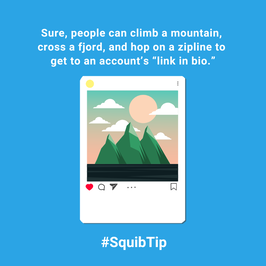|
By Anne Popolizio
Generating conversions from Instagram ads isn’t rocket science, but it’s not a no-brainer, either. The key to running Instagram ads that get leads and sales is knowing how to test your ads (and how to refine them based on your test results).
Before you unleash your next Instagram ad, familiarize yourself with these best practices for testing Instagram ads. Understand the four factors behind Instagram success Every Instagram ad has four main components:
Each of these components plays a role in your ad’s success, and each can impact the others’ effectiveness. Each can also be isolated and tested. We’re going to walk through each factor and how to effectively test it to maximize your final ad’s reach and impact with your intended audience. Remember, testing an Instagram ad is like testing anything else—to understand each piece’s role in determining the final result, you need to isolate each piece and test it individually. Objective The first component of your Instagram ad to test is your objective. It’s the most critical factor in determining who, when, and where people see your ad. That’s because it’s the factor that tells Ads Manager what kind of conversions you want your ad to generate. On Instagram, you can choose from the following campaign objectives: Awareness
It’s important that you choose the one that best aligns with the action you want viewers to take because Ads Manager knows when people are most likely to take certain actions—and serves them ads accordingly. For example, if you choose “catalog sales,” people will see your ad during the hours they’re most likely to make purchases. In other words, they won’t see your ad when they’re getting ready for work at 7 am. Messaging Once you’ve chosen your objective, it’s time to start testing different options. Your ad’s messaging is the content you use to grab viewers’ attention and express why taking advantage of your offer is something they need to do. And you have to do it all within three seconds. That’s how long it takes to establish relevance, another term for “getting people to stop scrolling and engage with your ad.” When you’re testing different messaging options, you’re testing three sections of your ad:
So how do you establish relevance? By using words that will connect with the audience you’re trying to reach. Geographical words, occupation words, words associated with the pain points you’re telling them you can fix—use these words in any text overlays in your image as well as in the primary text. Then, test variations of the image and text against each other to see which one results in the most conversions. A/B testing is built right into Ads Manager, so you can easily run two versions and compare their conversion rates. Consider testing variations like still image vs. video, single image vs. carousel, and text overlay vs. no text overlay. Choosing a CTA button is just like choosing an objective—just pick the one that aligns with your goal from the available options. Take a cue from this text and use it in your primary text, too—this guides viewers through your ad to your CTA. Offer Up next, we’ve got the offer. This is the actual offer you’re advertising—and testing it often means getting pretty granular. Here’s what I mean by that: You might be testing a BOGO deal against a 50 percent discount. Sure, they’re the same for the buyer cost-wise, but one might catch more eyes and generate more clicks than the other. You might find one product, even if it’s not your best deal, generates more sales than ads for other products. Maybe it’s a more photogenic offer, maybe it’s just more popular, maybe it’s the perfect gateway to your website and more sales on other products. Test different offers and find out. Your offer might be a lead magnet, rather than a tangible product. The same rules apply—try out different lead magnets with different messaging to find the one that results in the most clicks. Audience The last factor, audience, is deliberately listed last because before you can accurately test it, you need to have your ad’s objective, offer, and messaging just right. Once you know which offer and messaging work best for your objective, you need to determine who the ad works best with. Just like you can A/B test in Ads Manager, you can test different audiences. Try testing:
Once you dial in your ideal audience, you can use that data to scale your ads. You know which version of your ad converts best, you know who it converts best, and now you’re ready to unleash it on Instagram as the conversion-generating machine it is. For a more in-depth explanation of how to test and scale Instagram ads and get real results, check out my article on Social Media Examiner. In it, you’ll learn:
To truly get the most out of your Instagram ad budget, read this comprehensive article now. *see article at https://backlinko.com/instagram-users Comments are closed.
|
Say Hi!
© COPYRIGHT SOCIAL SQUIB 2016.
ALL RIGHTS RESERVED.
ALL RIGHTS RESERVED.

 RSS Feed
RSS Feed

